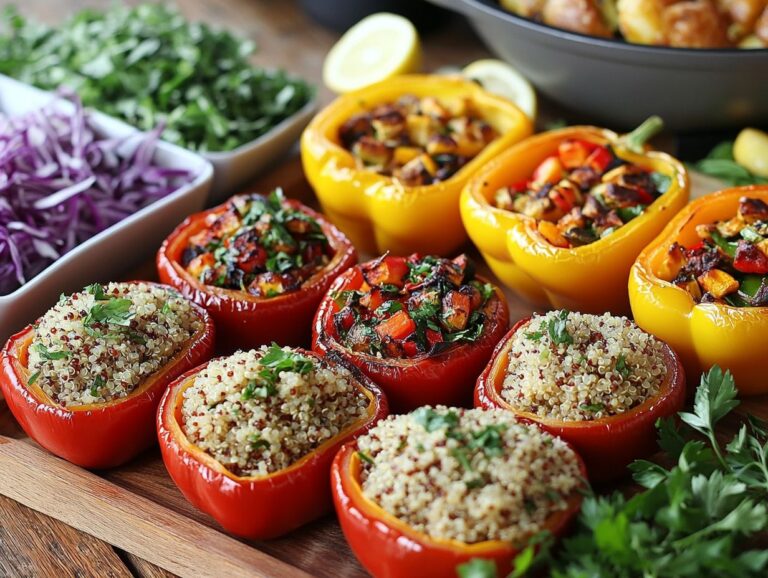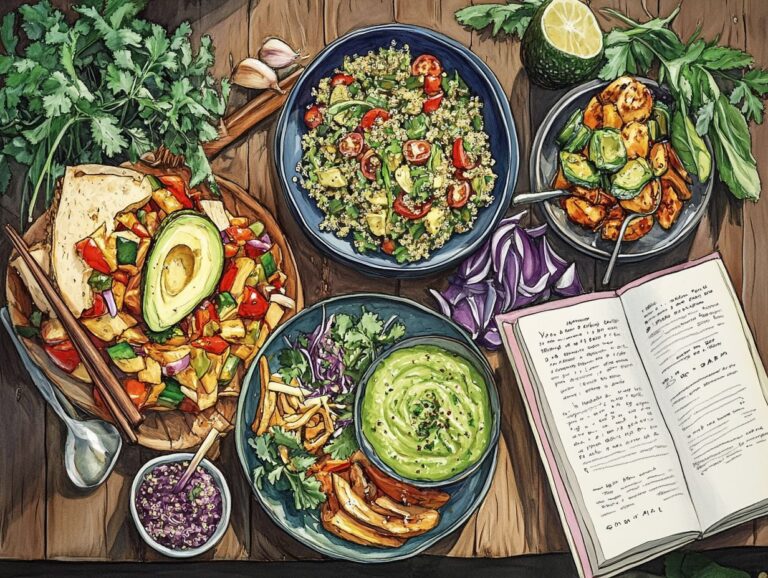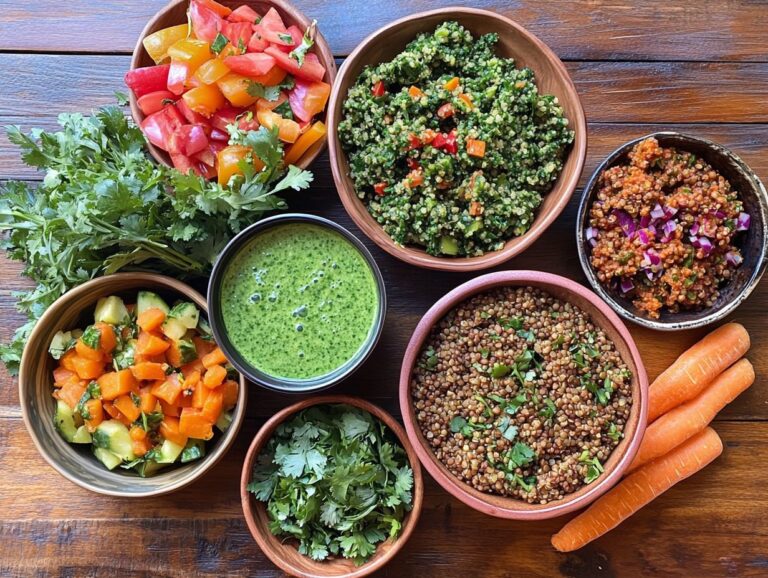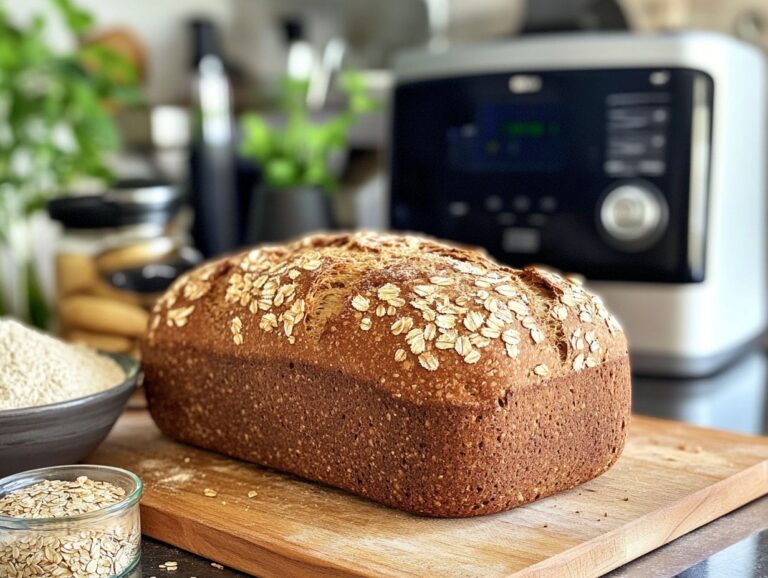Spanish cuisine is celebrated for its diverse flavors and rich traditions, creating an enjoyable experience for both omnivores and those seeking vegan-friendly options. This article explores the history and culture of Spanish vegan dishes, highlighting how traditional foods are adapted to be plant-based. It also features authentic vegan recipes for popular dishes like Paella, Tortilla de Patatas, and Gazpacho, along with practical tips for meal planning and grocery shopping.
The History and Culture Behind Spanish Vegan Dishes
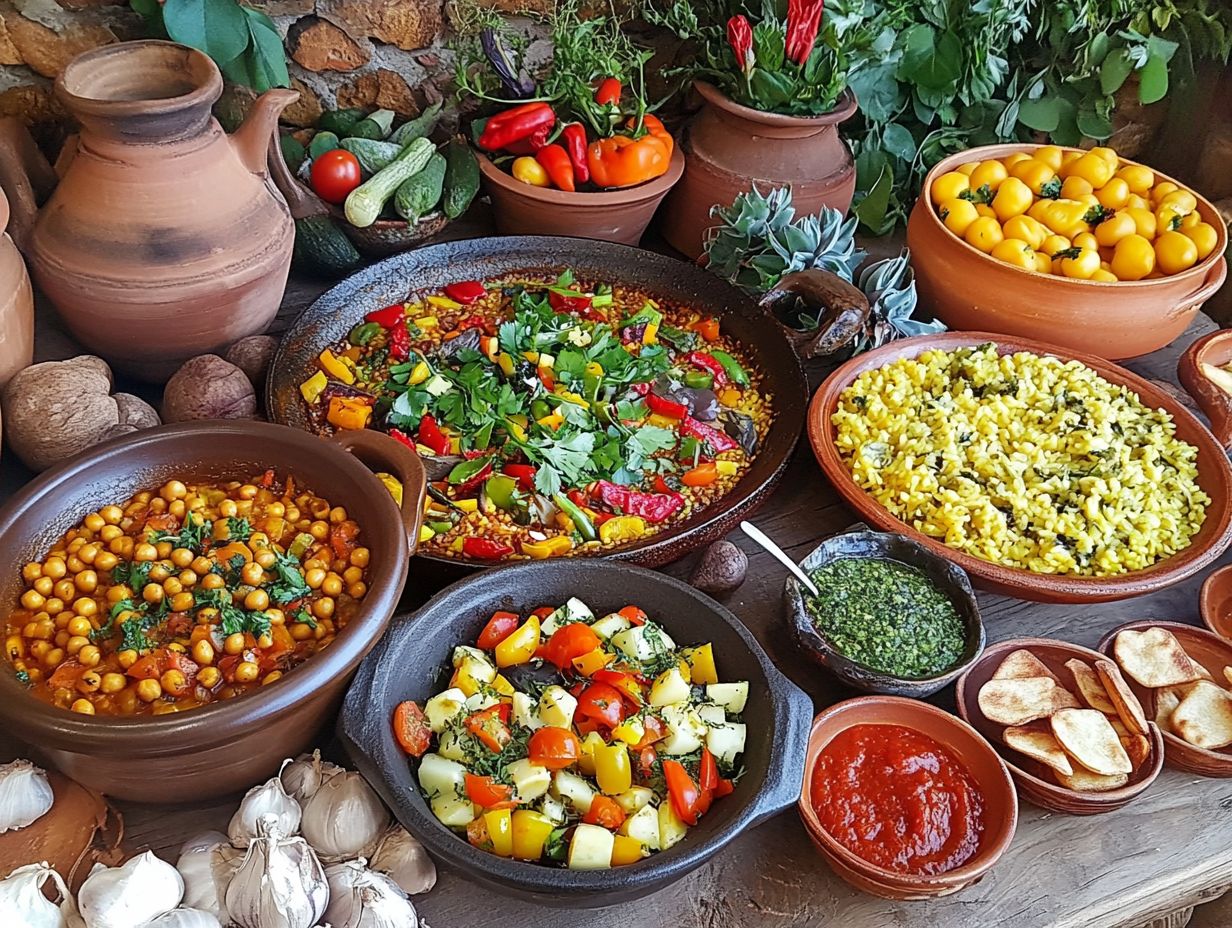 The history and culture behind Spanish vegan dishes illustrate the rich variety of flavors and traditions in Spanish cooking that date back centuries. The diverse cultural influences from regions such as Andalusia, Barcelona, Malaga, and Valencia are evident in contemporary cuisine. Spain’s culinary landscape is characterized by a wide range of ingredients and traditional dishes, which have evolved to embrace vegan options aligned with the Mediterranean diet. The emergence of the vegan movement has enabled many traditional recipes to be modernized, focusing on fresh, local, and organic ingredients that reflect Spanish cultural values. This shift towards plant-based eating underscores the importance of seasonal produce, legumes, and grains, such as garbanzos and beans, that have been integral to the Spanish diet for generations. Traditional dishes are adapted in various regions; for example, Andalusia is known for its azafr n-flavored vegetable gazpacho, while Catalonia offers escalivada, a dish made with roasted vegetables like eggplant, bell peppers, and tomatoes, often served as a topping for bread or as a salad. The Spanish diet has also been influenced by Moorish cuisine, which introduced spices and vegetables such as chickpeas and eggplant, while Latin American cuisine brought staples like corn, potatoes, and beans into the mix. The rise of vegan-friendly restaurants, including places like MIMO Vegan and Veggie Garden, in Spain has led to modern adaptations of classic recipes, such as patatas bravas (spicy potatoes) served with vegan aioli and creamy tapas made with plant-based cheeses. This culinary evolution has made it easier for diners to enjoy their favorite traditional dishes while adhering to a plant-based diet.
The history and culture behind Spanish vegan dishes illustrate the rich variety of flavors and traditions in Spanish cooking that date back centuries. The diverse cultural influences from regions such as Andalusia, Barcelona, Malaga, and Valencia are evident in contemporary cuisine. Spain’s culinary landscape is characterized by a wide range of ingredients and traditional dishes, which have evolved to embrace vegan options aligned with the Mediterranean diet. The emergence of the vegan movement has enabled many traditional recipes to be modernized, focusing on fresh, local, and organic ingredients that reflect Spanish cultural values. This shift towards plant-based eating underscores the importance of seasonal produce, legumes, and grains, such as garbanzos and beans, that have been integral to the Spanish diet for generations. Traditional dishes are adapted in various regions; for example, Andalusia is known for its azafr n-flavored vegetable gazpacho, while Catalonia offers escalivada, a dish made with roasted vegetables like eggplant, bell peppers, and tomatoes, often served as a topping for bread or as a salad. The Spanish diet has also been influenced by Moorish cuisine, which introduced spices and vegetables such as chickpeas and eggplant, while Latin American cuisine brought staples like corn, potatoes, and beans into the mix. The rise of vegan-friendly restaurants, including places like MIMO Vegan and Veggie Garden, in Spain has led to modern adaptations of classic recipes, such as patatas bravas (spicy potatoes) served with vegan aioli and creamy tapas made with plant-based cheeses. This culinary evolution has made it easier for diners to enjoy their favorite traditional dishes while adhering to a plant-based diet.
Traditional Spanish Ingredients in Vegan Cooking
Vegan cooking often incorporates traditional Spanish ingredients to celebrate the country’s unique Mediterranean flavors, including fresh olives and seasonal herbs. Staples like garlic, olive oil, and tomatoes serve as the foundation for most recipes, providing plant-based alternatives to traditional Spanish meals. By emphasizing fresh, local, and seasonal products, these vegan dishes, enhanced with spices like smoked paprika and saffron, can truly reflect Spain’s rich culinary heritage.
Key Ingredients and Substitutions
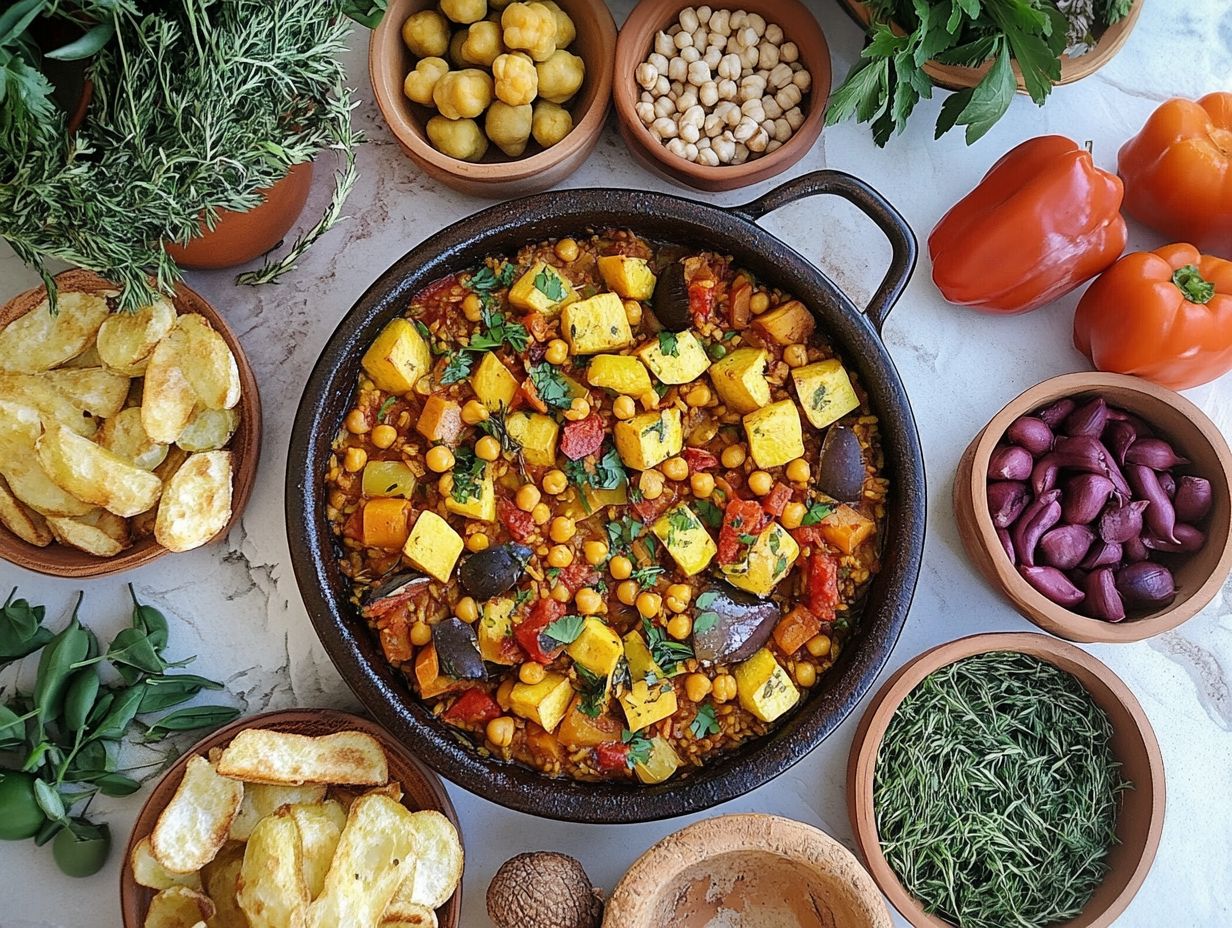 Key ingredients in Spanish vegan recipes include staples such as garlic, olive oil, and a variety of vegetables like peppers, potatoes, and chickpeas, which preserve the authentic flavors of traditional dishes while providing plant-based alternatives. Incorporating smoked paprika and saffron can enhance the flavor profile, infusing dishes with the deep, aromatic essence that is characteristic of Spanish cuisine. For those seeking to replace creamy elements, non-dairy yogurt or cashew cream can be seamlessly integrated into recipes like patatas bravas or paella, ensuring that the textures remain rich and satisfying. When sourcing ingredients, it is advisable to prioritize organic and seasonal produce for the freshest flavors and nutrients; local farmers’ markets are excellent places to find these essentials. By embracing these tips, you can create an enjoyable cooking experience that celebrates the culinary heritage of Spain while focusing on plant-based living.
Key ingredients in Spanish vegan recipes include staples such as garlic, olive oil, and a variety of vegetables like peppers, potatoes, and chickpeas, which preserve the authentic flavors of traditional dishes while providing plant-based alternatives. Incorporating smoked paprika and saffron can enhance the flavor profile, infusing dishes with the deep, aromatic essence that is characteristic of Spanish cuisine. For those seeking to replace creamy elements, non-dairy yogurt or cashew cream can be seamlessly integrated into recipes like patatas bravas or paella, ensuring that the textures remain rich and satisfying. When sourcing ingredients, it is advisable to prioritize organic and seasonal produce for the freshest flavors and nutrients; local farmers’ markets are excellent places to find these essentials. By embracing these tips, you can create an enjoyable cooking experience that celebrates the culinary heritage of Spain while focusing on plant-based living.
Authentic Vegan Spanish Recipes
Authentic vegan Spanish recipes showcase the diverse and rich culinary heritage of Spain by transforming traditional favorites into plant-based delights that encapsulate the essence of Mediterranean flavors. From the iconic paella, made with a variety of seasonal vegetables and spices, to the classic tortilla de patatas, prepared with plant-based alternatives, each dish provides a unique taste of Spain. Additionally, refreshing gazpacho and delightful sangria serve as the perfect appetizers and beverages, beautifully complementing any meal, especially when enjoyed at restaurants like Restaurante Copenhagen and Superchulo.
Paella
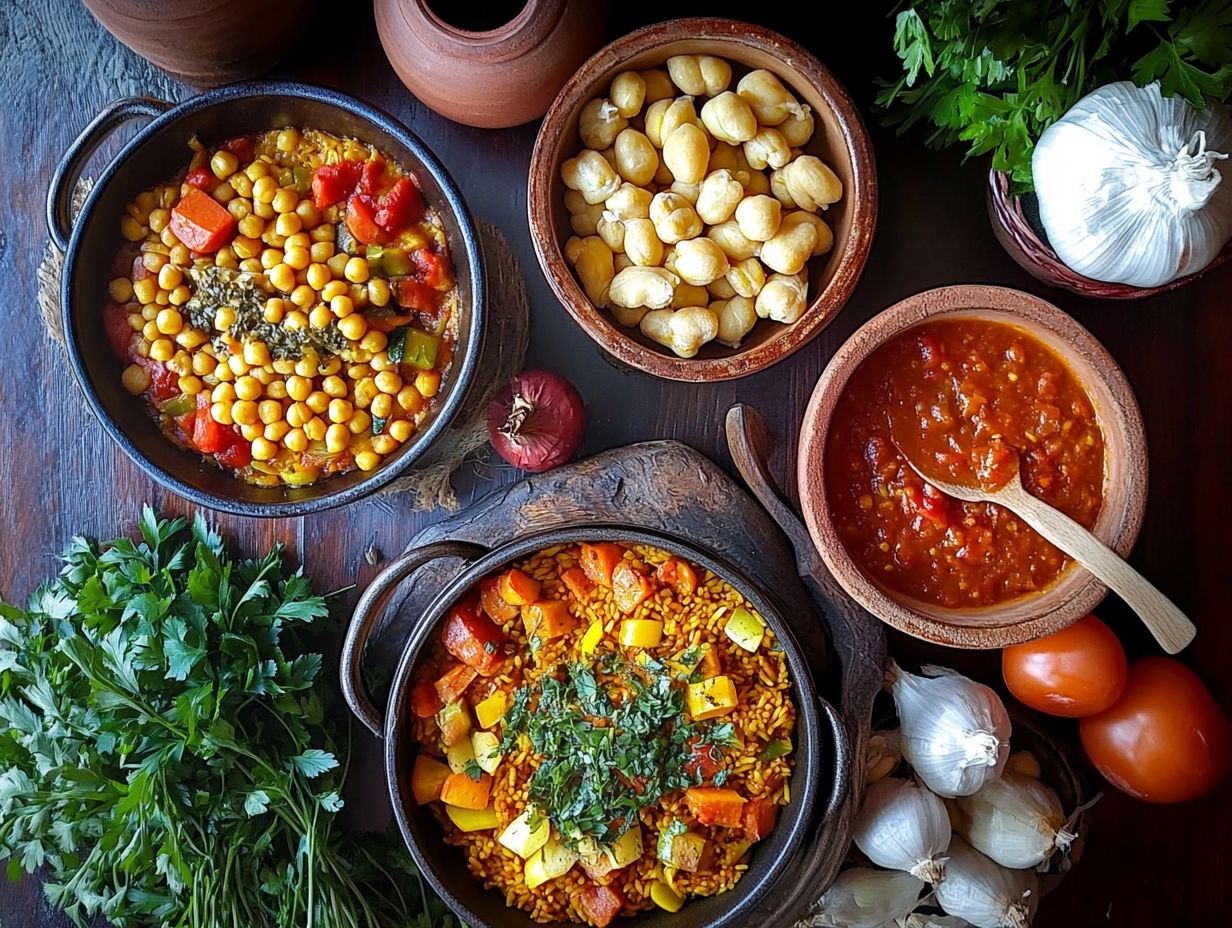 Vegan paella offers a healthy twist on the traditional Spanish dish by featuring rice cooked with saffron and a variety of seasonal vegetables, such as peppers, tomatoes, and green beans, resulting in a colorful presentation. Garbanzos are typically included for protein, ensuring that this plant-based version of paella remains hearty and satisfying. This dish exemplifies Mediterranean cuisine and demonstrates how Spanish recipes can be adapted for a vegan diet. Vegan paella can be easily customized by substituting ingredients, such as opting for quinoa or cauliflower rice for a gluten-free option. The use of olive oil to saut the vegetables, along with smoked paprika and a dash of sea salt, imparts a distinctive Spanish flavor to the dish. Beyond its taste, paella holds cultural significance in Spain, symbolizing community and celebration, and is often enjoyed during social gatherings, including events in vibrant cities like Madrid and Granada. This vegan adaptation preserves that aspect of the dish’s identity while promoting inclusivity in an ever-evolving culinary landscape.
Vegan paella offers a healthy twist on the traditional Spanish dish by featuring rice cooked with saffron and a variety of seasonal vegetables, such as peppers, tomatoes, and green beans, resulting in a colorful presentation. Garbanzos are typically included for protein, ensuring that this plant-based version of paella remains hearty and satisfying. This dish exemplifies Mediterranean cuisine and demonstrates how Spanish recipes can be adapted for a vegan diet. Vegan paella can be easily customized by substituting ingredients, such as opting for quinoa or cauliflower rice for a gluten-free option. The use of olive oil to saut the vegetables, along with smoked paprika and a dash of sea salt, imparts a distinctive Spanish flavor to the dish. Beyond its taste, paella holds cultural significance in Spain, symbolizing community and celebration, and is often enjoyed during social gatherings, including events in vibrant cities like Madrid and Granada. This vegan adaptation preserves that aspect of the dish’s identity while promoting inclusivity in an ever-evolving culinary landscape.
Tortilla de Patatas
The vegan tortilla de patatas is a plant-based version of the classic Spanish omelet, which is traditionally made with eggs, potatoes, and onions. In this vegan alternative, chickpea flour or silken tofu is used to replicate the texture while preserving the rich flavors typical of the dish. This filling meal can be enjoyed at any time of day and showcases the flavors of Spain in a plant-based format. To prepare the dish, you will need the following ingredients:
- potatoes
- olive oil
- onions
- either chickpea flour or silken tofu
- your favorite spices
Begin by peeling and slicing the potatoes and onions, then saut them in olive oil until they are soft and golden. If you are using chickpea flour, mix it with water to create a thick batter; alternatively, blend the silken tofu until smooth. Combine the saut ed vegetables with the batter, pour the mixture into a hot non-stick frying pan, and cook until set. This versatile dish is a staple of Spanish cuisine and can be served as tapas or as a main meal, making it perfect for any gathering, whether in traditional settings or modern venues like Hotel Margot House.
Gazpacho
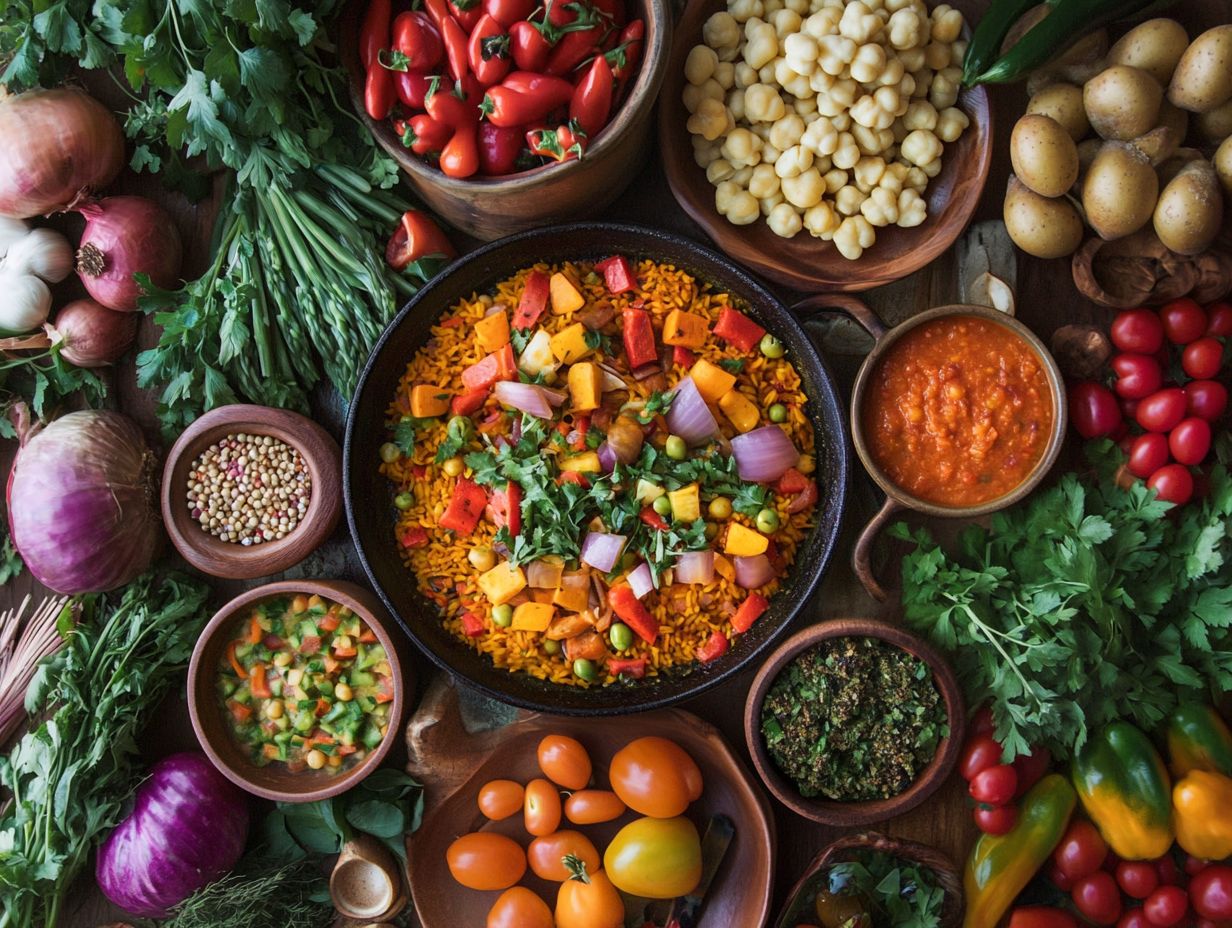 Vegan gazpacho is a cold soup made from ripe tomatoes, cucumbers, peppers, and a variety of spices and seasonings, making it a traditional Spanish dish perfect for warm weather, often served at Mediterranean-themed parties. This simple recipe can be easily adapted to include different spices and herbs, ensuring that every spoonful offers a flavorful experience. Typically served as an appetizer, vegan gazpacho is also enjoyed by many as a light meal due to its simplicity and versatility. As a quintessential Mediterranean dish, it celebrates the region s abundant agricultural bounty. The bright colors of this cold tomato soup are visually appealing and serve as a celebration of seasonal produce. With its Spanish origins, gazpacho also features local variations that highlight how ingredients like basil, mint, or lime zest can add new dimensions of flavor. By choosing organic and in-season vegetables, anyone can prepare a bowl of this vibrant soup that honors agricultural practices and culinary heritage. Variations such as adding avocados for creaminess or a touch of jalape o for heat cater to a wide array of taste preferences, enhancing this classic dish.
Vegan gazpacho is a cold soup made from ripe tomatoes, cucumbers, peppers, and a variety of spices and seasonings, making it a traditional Spanish dish perfect for warm weather, often served at Mediterranean-themed parties. This simple recipe can be easily adapted to include different spices and herbs, ensuring that every spoonful offers a flavorful experience. Typically served as an appetizer, vegan gazpacho is also enjoyed by many as a light meal due to its simplicity and versatility. As a quintessential Mediterranean dish, it celebrates the region s abundant agricultural bounty. The bright colors of this cold tomato soup are visually appealing and serve as a celebration of seasonal produce. With its Spanish origins, gazpacho also features local variations that highlight how ingredients like basil, mint, or lime zest can add new dimensions of flavor. By choosing organic and in-season vegetables, anyone can prepare a bowl of this vibrant soup that honors agricultural practices and culinary heritage. Variations such as adding avocados for creaminess or a touch of jalape o for heat cater to a wide array of taste preferences, enhancing this classic dish.
Sangria
Vegan sangria is a delightful Spanish beverage made from red or white wine and a variety of fruits, including oranges, lemons, and berries. This refreshing drink is often associated with social gatherings and summer evenings. Using organic and seasonal fruits, such as those sourced from local supermarkets or farmers’ markets, not only enhances the flavor but also aligns with vegan principles. Sangria can be customized to suit personal preferences, making it a favorite among friends and family alike. It holds a significant place in Spanish culture, frequently enjoyed during holidays and family celebrations. Traditionally, sangria serves as a welcoming drink for guests at family reunions, picnics, and outdoor gatherings. To create a simple vegan sangria, one can use 750ml of high-quality organic red wine, perhaps sourced from eco-friendly vineyards, along with the following fruits:
- Two chopped oranges
- One lemon
- One cup of mixed berries
A splash of natural fruit juice, such as pomegranate or cranberry, adds depth to the drink. For an extra touch of flavor, consider adding a few sprigs of fresh mint or a splash of brandy to elevate the vegan sangria experience.
Tips for Incorporating Vegan Spanish Dishes into Your Diet
Vegan Spanish dishes can be easily integrated into the diets of those who wish to adopt them. Once various meal planning and grocery shopping techniques are considered, obtaining the necessary ingredients to prepare these meals at home becomes straightforward. Enjoying vegan Spanish meals at restaurants or experimenting with traditional Spanish recipes, such as Pimientos de Padr n or Berenjenas con Miel, can offer both enjoyable and healthy options for those interested in this cuisine.
Meal Planning and Grocery Shopping Tips
Effective meal planning and grocery shopping are essential for successfully implementing a diet centered around vegan Spanish dishes, ensuring access to fresh, local, and seasonal ingredients. Culinary techniques inspired by Spanish cuisine benefit greatly from creating a weekly menu and shopping list that includes the ingredients needed for recipes like paella, gazpacho, and tortilla de patatas. This approach saves time and allows for more informed decisions when selecting vegan-friendly ingredients, such as fresh herbs, ripe tomatoes, and high-quality olive oil. Specific meal planning strategies, such as batch cooking and theme nights, can be particularly useful; for example, dedicating one day of the week to preparing rich Spanish stews or vibrant Mediterranean salads that can be enjoyed throughout the week. When grocery shopping for seasonal ingredients, one can find ripe tomatoes, bell peppers, and zucchini during the summer months, while winter may bring vegetables like pumpkins and kale. Visiting local supermarkets can also help find a variety of fresh options. Visiting farmers’ markets and participating in community-supported agriculture (CSA) programs are excellent ways to discover local sources of produce, providing access to fresh, organic vegetables grown just miles or even feet from home. Additionally, exploring local restaurants can introduce you to delicious, vegan-friendly dishes made from these fresh ingredients. Additionally, keeping pantry staples on hand such as rice, Spanish smoked paprika, and dried beans can enhance any dish and ensure that there are always ingredients available to prepare a delicious vegan meal. Ingredients like garlic, olive oil, and tomatoes are essential for creating tasty and traditional Spanish dishes.
Enjoying the Flavors of Vegan Spanish Cuisine: A Culinary Journey Through Spain
Enhancing the appreciation of vegan Spanish dishes and Mediterranean cuisine can be achieved through the following suggestions:
- Create a warm and inviting atmosphere at home, reminiscent of local Spanish restaurants, by using colorful tableware and soft lighting. Incorporate herbs and spices to enhance the aroma and flavor of the meals.
- Enjoy the experience with family and friends, as many Spanish dishes, such as patatas bravas (crispy potatoes served with a spicy sauce), are meant to be shared. Consider serving a variety of tapas and plant-based appetizers to make the meal more diverse and engaging.
- Explore local restaurants that specialize in vegan Spanish cuisine. Discover new favorites like gazpacho (a cold soup made with fresh vegetables) or seasonal vegetable paella. This not only allows you to savor the flavors of the region but also demonstrates how these dishes can complement a variety of occasions, ranging from casual gatherings to more formal events. Don’t miss trying traditional desserts like Tarta de Santiago and Churros, or unique dishes like Berenjenas con Miel (fried eggplant with honey).
For a more immersive experience, consider visiting places like Hotel Margot House in Barcelona or Ecocirer Guest House in Mallorca, where you can enjoy vegan-friendly meals. Additionally, check out this video tutorial on vegan Spanish recipes:
